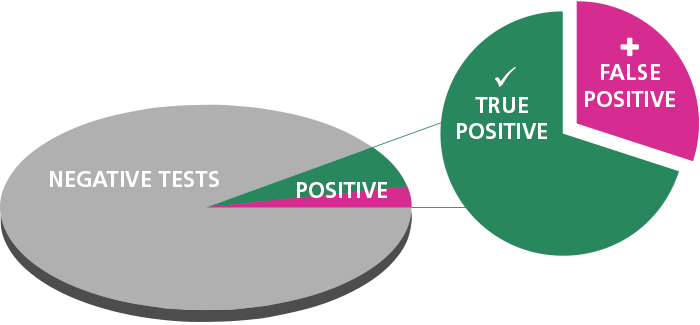Putting the 3% blood culture contamination rate benchmark to the test
Today, experts suggest that overall institutional blood culture contamination (BCC) rates of <1% are now achievable, and therefore, should become the universal performance benchmark.1
However, hospitals still measure themselves against the outdated Clinical Microbiology Laboratories (CML) standard2 that said BCC rates should not exceed 3%, based on a 1998 Q Probe survey3,4
Even when hospitals achieve the 3% rate, approximately one-third of their positive results are inaccurate. That means, about 1/3 of all patients who receive a positive blood culture result—and for whom antibiotic treatment is initiated—are put at risk unnecessarily.
Compare the laboratory result distribution of ‘All Blood Cultures’ to the subset of ‘Positive Blood Cultures’

We would not accept a test that wrongly detects pregnancy one in three times. Why tolerate these rates from blood culture testing?






